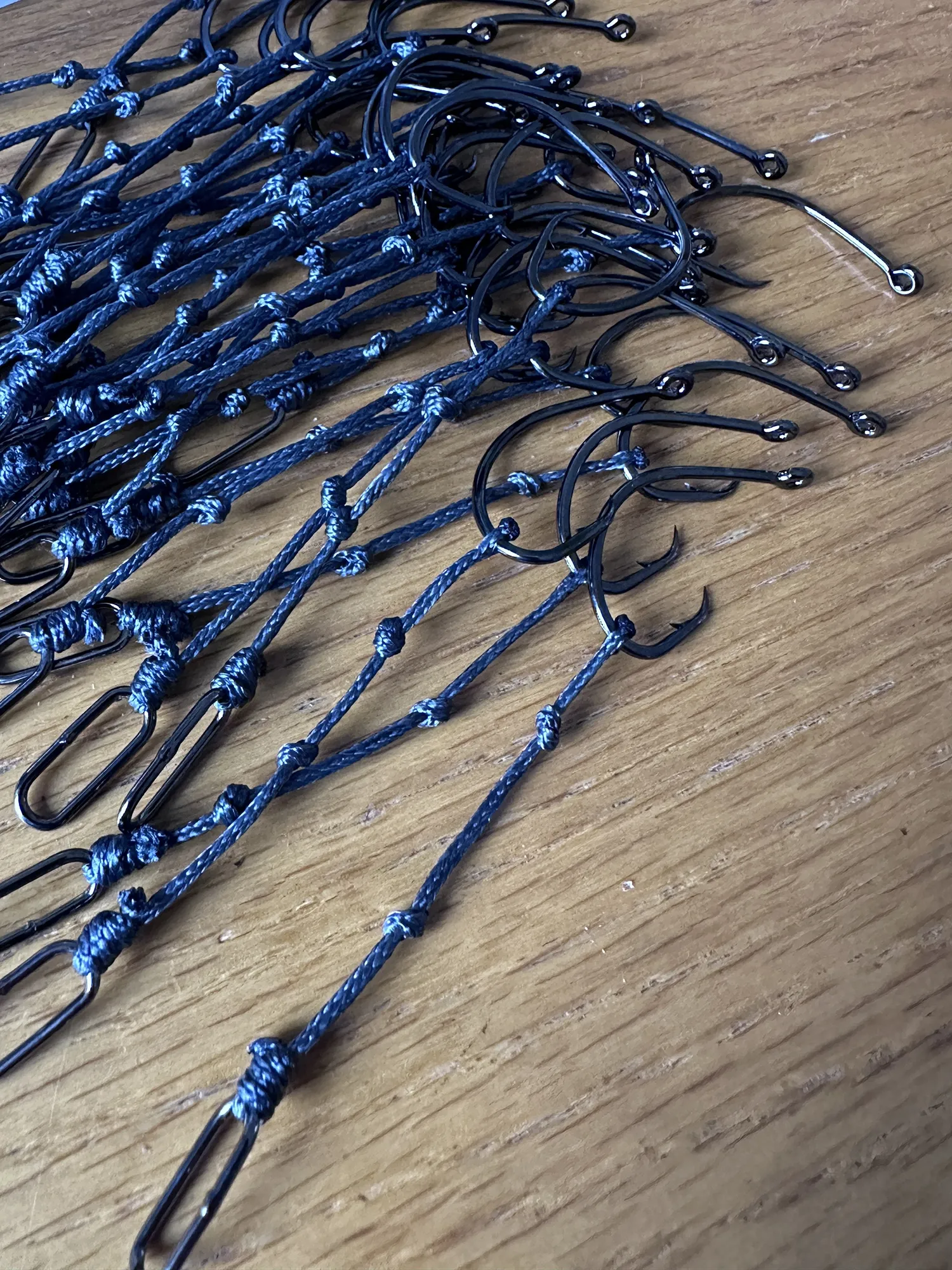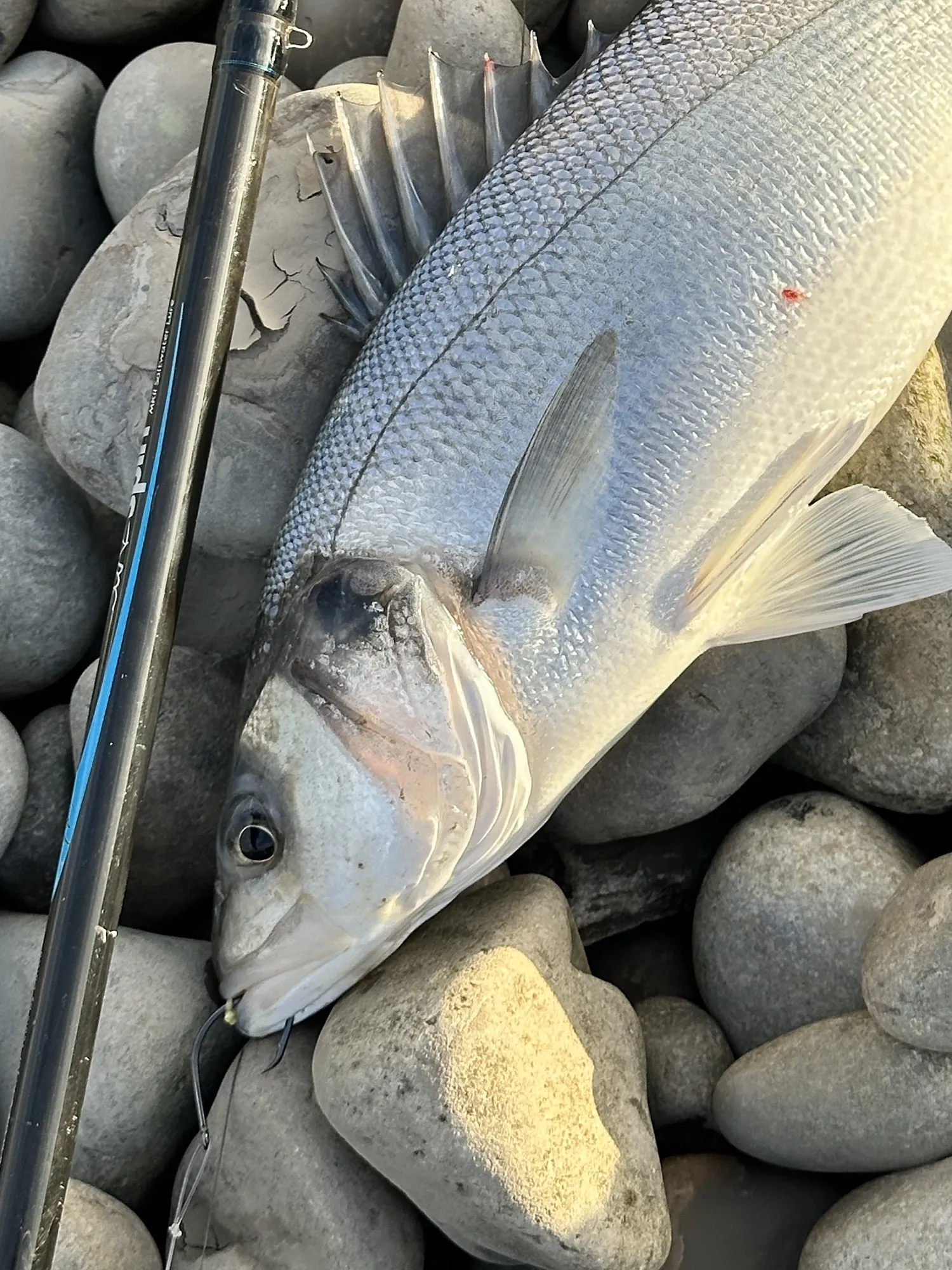Why I Went Back to Fixed Spool Reels (And Why I Wish I’d Done It Sooner)
Explore this blog to learn more about Why I Went Back to Fixed Spool Reels (And Why I Wish I’d Done It Sooner).
Published on July 29, 2025
- /
- Blogs /
- Why I Went Back to Fixed Spool Reels (And Why I Wish I’d Done It Sooner)
Why I Went Back to Fixed Spool Reels
(And Why I Wish I’d Done It Sooner)
The more I reflect on it, the more I wonder why it took me so long to return to using a fixed spool reel. It’s been just over three years since I made the switch, and what began as a practical decision has turned into something of a revelation.

Time for Change
Like many changes in angling, this one didn’t stem from frustration or dissatisfaction—it happened almost by accident. I was taking newcomers fishing—people who had never so much as held a rod before—and the need for simplicity was obvious. Trying to teach complete beginners how to cast with a multiplier reel would have been a recipe for tangles, frustration, and, possibly, them never returning to the beach again.
So I picked up a modern fixed spool reel, purely for the sake of making things easier for my clients. What I didn’t expect was just how much I would benefit. That switch, initially made for convenience, became an education. It made me question a lot of long-held assumptions, both my own and those widely held across the angling community.
This article isn’t an attempt to evangelise or tell anyone what gear they should be using. That’s not what fishing is about. If there were only one type of reel we were all supposed to use, the sport would quickly lose its charm. What I am offering is a personal account of why I changed, what I’ve learned, and why I believe fixed spool reels deserve far more respect than they often get.

The Multiplier: A Complicated Love Story
I’ve fished with multiplier reels for most of my life. I started around the age of 13 and have spent decades using them in a wide variety of conditions. Over the years, I’ve worked my way through many of the big names—Shimano, Daiwa, Penn—and have developed a deep appreciation for the engineering, precision, and performance that a well-tuned multiplier can offer.
There’s no denying that casting with a multiplier is a skill. There’s a real sense of pride that comes with mastering a smooth technique and getting it right. I've put leads out somewhere in the region of 200 yards and know plenty of others who consistently push 250 or more. Watching a true expert handle a multiplier is like watching an artist at work—graceful, efficient, and hugely impressive.
But that performance comes at a cost. Multipliers require tuning. And not just once, but constantly. Run the reel too slowly and you lose distance. Run it too fast and you risk a catastrophic overrun. One moment of mistiming and you're left picking out a bird’s nest of epic proportions. That might be fine when you’re fishing alone with time on your hands, but it’s not ideal during a high-pressure session or when introducing others to the sport.
The problem is that multipliers can give a false sense of capability. Anglers often assume that owning a top-end multiplier means they’ll be casting like a tournament pro. And some believe they are. But in reality, there are no shortcuts. Consistent long-range casting takes hundreds of hours of practice, trial, and error. For those willing to invest that time, the payoff can be immense. But for many—especially those fishing less frequently—the multiplier becomes a finicky, disappointing and unforgiving tool.

Breaking the Myth: Fixed Spools Aren’t Just for Beginners
Let’s address an outdated and frankly misguided idea head-on: that fixed spool reels are somehow inferior, or only suitable for novices.
I grew up with that belief. When I was a teenager, it was commonly understood—or rather, assumed—that fixed spool reels were what you started on before you graduated to a 'proper' reel. Fixed spools were often mocked, branded as basic, clunky, or cheap. They were associated with inexperience, and in some circles, they still are.
But times change, and technology evolves. Today’s fixed spool reels are worlds apart from the ones I used in my early years. The build quality, materials, gearing, and design philosophy behind modern fixed spools place them firmly in the top tier of angling equipment. They are not toys. They are not noddy tools. They are high-performance, precision-engineered reels capable of matching, and in many cases exceeding, the performance of multipliers—particularly when it comes to real-world, day-to-day fishing. It’s notable that the vast majority of the rest of the world use fixed spool reels for their shore fishing, with just a couple of exceptions.
Modern fixed spools offer outstanding casting ability, minimal maintenance, quick gear retrieval, and a far more forgiving experience. They're fast, robust, and smooth. So why are they still overlooked? I suspect a lot of it comes down to habit and misplaced pride. Some anglers simply don’t want to admit that there might be an easier, more effective tool for the job—especially when they’ve invested years into mastering a multiplier.

Practicality vs. Prestige: Choosing the Right Tool for the Job
Over time, the use of multipliers has become something of a badge of honour in certain circles. It’s almost as if the reel you use says something about your experience level or credibility as an angler. Turn up at the beach with a fixed spool and a lighter rod, and you may well be judged—until, of course, you start out-fishing everyone.
There’s a peculiar kind of snobbery that’s crept into parts of sea angling. Using a multiplier paired with a heavy-duty rod has become part status symbol, part performance aspiration. But if we strip away the posturing and look at what’s actually happening, many anglers are using setups that are overpowered, overcomplicated, and frankly impractical for the conditions.
Fishing should be about efficiency, effectiveness, and enjoyment. And in that regard, fixed spools have some compelling advantages.
The gearing in modern fixed spool reels is both strong and smooth. High-end models—especially those over the £200 mark—have little to no play, minimal wobble under load, and are built with fine tolerances that easily rival multipliers. The Shimano Power Aero models I’ve been using are a perfect example. Their fast retrieve makes reeling in across rough ground far easier than with a slower, traditional multiplier. The drag system is not only smoother but also more accessible in real time, giving you control when you need it most.
And then there’s the flexibility. I now run three of these reels with 18 spools between them, each one loaded for a different scenario. Lost a rig? Swap a spool. Need a lower diameter mainline? Swap a spool. Want to fish braid or mono? Swap a spool. Carrying six multipliers to cover the same range of options would be ridiculous, not to mention expensive and heavy. Fixed spools have made my tackle lighter, my sessions more streamlined, and my options more accessible.

Addressing the Downsides: Line Twist, Big Leads and the Learning Curve
No reel is perfect, and it would be disingenuous to pretend that fixed spools don’t come with a few quirks of their own. The most commonly cited drawback is line twist.
Now, in theory, this is a valid concern. The way line peels off a fixed spool can create twist if the line isn’t loaded properly. But in practice? I’ve yet to experience a session ruined by it. With correct spooling and some mindfulness when it comes to applying tension on the retrieve, I can’t say I’ve experienced one issue in this regard.
Another supposed drawback is that fixed spools are limited in casting potential. But again, this argument is becoming increasingly weak. With a decent rod and technique, today’s fixed spools can put a baited rig out a very long way—certainly far enough to catch fish on most venues. Unless you're deep into tournament casting or pushing extreme distances, the difference is negligible.
And then there’s the supposed “lack of control.” But modern drag systems and line lay designs mean you’ve got more control than ever before. You're not sacrificing precision. You're simplifying the mechanics.
The one area that I’ve not been entirely happy with is the casting of big leads. If I ever need to cast 8oz or more, I will revert back to the multiplier. The extra pressure on the finger exerted by these heavy leads on the cast feels off, even with a casting glove. It’s ridiculous really when you consider the use of bigger leads in countries like south Africa; they cast these big leads and huge baits for a pastime, often using a Casting Cannon, but personally, it’s not for me.
Reels Are Personal
But It’s Worth Keeping an Open Mind
In the end, reels are like rods—they’re a personal choice. They’re a part of your fishing style, your routine, and your comfort zone. And that’s fine. No one is suggesting you abandon what works for you.
But what I would suggest is this: if it’s been ten, fifteen, twenty years since you last used a fixed spool reel, take a look at what’s available now. The difference is staggering.
For me, going back to a fixed spool wasn’t about rejecting multipliers—it was about finding something that better suited how I fish today. The ease of use, flexibility, lower maintenance (time freed up), and overall performance have made me a convert. Not out of nostalgia or simplicity, but out of a genuine recognition that these reels have come a very long way.
If you’re on the fence, give one a try. It might surprise you. And if it doesn’t? That’s fine too. The beauty of fishing is in the variety—and the freedom to choose the gear that makes it most enjoyable for you.


